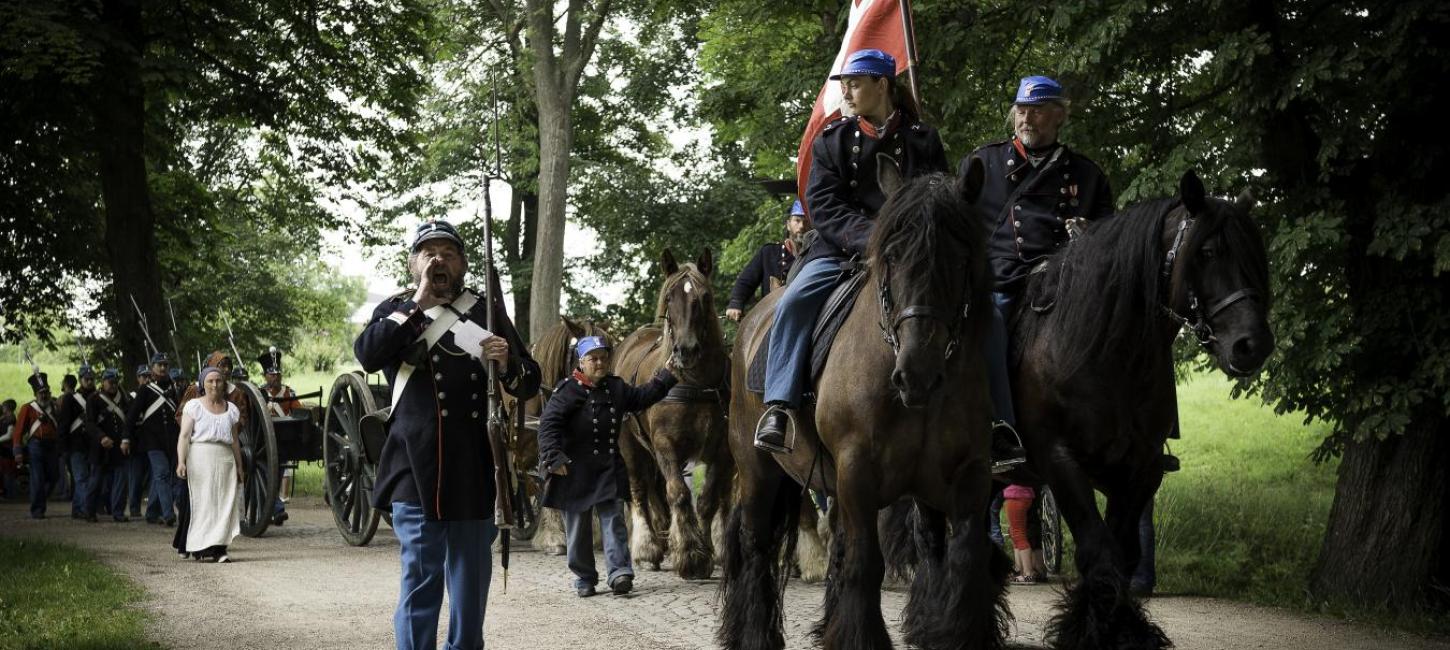
The King's fortress town
Fredericia was founded by King Frederik III in 1650 as a fortification in a time, where Denmark was riddled with conflicts and war..
Until 1650, there was just a bare piece of swampy land where Fredericia lies today. After a number of unsuccessful wars, not least the Thirty-Year-War (1618-1648) in which Denmark once again found itself on the losing side, King Frederik III decided to take action, once and for all. Bersodde, as the area was called at that time, was an ideal place to build a fortress town. With coastline on two sides, it was possible to fortify and protect the town with relatively few kilometres of ramparts.
The construction of a new town
The King tasked 5000 men with the job of building the ramparts by hand. Before they were completed, a new war with the Swedes got in the way. Once defeated by the Swedes, the city and its ramparts were rebuilt. The King's new fortress town lacked one vital thing though: inhabitants. A forced relocation of the entire population of the town of Vejle was considered, but the idea was dropped. Instead, the inhabitants of the nearby villages of Hyby, Hannerup and Ullerup were forced to move. Most of the villagers were farmers and they were not altogether pleased by the prospect of living in the new town and thus every day having to walk all the way out to their fields. But of course, the King had his way.
A multicultural town
Forcing the nearby villagers to settle in the new fortress town was not enough. The town needed more inhabitants. In order to attract people, he introduced a number of special royal privileges. These included tax exemptions, free building plots, impunity for criminals, asylum, customs exemptions, religious freedom (which was not the norm in those days) and several other enticements. In terms of religion, this attracted communities from all over Europe, where they were being followed and harassed. Fredericia was soon the home of Jews, Huguenot reformists from France, Catholics and other religious communities.
All these privileges turned Fredericia into a veritable melting pot of inhabitants with many different backgrounds.
As an additional benefit, the new European population introduced crops such as tobacco, wheat and potatoes.
Fashionable urban planning
Almost every town and city in Denmark has started out as a small settlement and evolved over a course of many years. Fredericia is a unique example of a planned city, designed from scratch and built from nothing. Within the ramparts, the street plan was designed as a grid structure - like a "military chessboard" with central squares. One advantage of the grid layout was that troops could easily move about and quickly reach the borders of the town. Tall buildings and towers, including church towers, were not constructed inside the ramparts. This practical measure ensured that the enemy had no landmarks to aim for.
The King had grandiose plans for Fredericia and dreamed of making it the new capital city. After the war against the Swedes in 1657, these plans were abandoned and the plan for Fredericia was amended, but the King still had great visions for his new town. The streets were given appropriately royal names, such as Kongensgade (King’s Street), Dronningens Gade (Queen's Street), Prinsens Gade (Prince's Street), Prinsessegade (Princess' Street), Købmagergade and Gothersgade, which are street names also found in Copenhagen.
The town was also intended to showcase the King's wealth and power to the rest of Europe. Frederik III was inspired by the canals of Venice and the grid structure, which was all the rage, in modern city planning circa 1650. Fredericia would be designed with grid structure and canals and nothing less would do!
The original drawings reveal the locations of the canals, and how they would lead up to the major squares. By the square which is today known as Axeltorv, there were also plans of building a castle.
Unfortunately, years of expensive warfare had drained the funds and the King had to do without the castle and the canals.